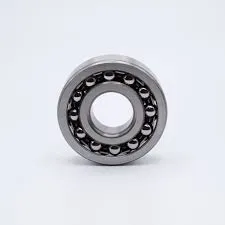
Oct . 06, 2024 14:56 Back to list
deep groove ball bearings are used for
Understanding the Applications of Deep Groove Ball Bearings
Deep groove ball bearings are one of the most common types of rolling element bearings, widely employed in various mechanical applications due to their versatility and effectiveness. Characterized by their deep raceway grooves, these bearings accommodate both radial and axial loads, making them ideal for a plethora of situations.
Structure and Design
Deep groove ball bearings consist of an outer ring, an inner ring, a set of balls, and a cage. The structure allows for both radial and axial loads to be supported efficiently. The deep raceway design helps to increase the bearing's load-carrying capacity and improves its overall performance. In addition to their robust load-bearing capabilities, deep groove ball bearings are also engineered to operate at high speeds, making them suitable for applications that require rapid motion.
Applications Across Industries
1. Automotive Industry Deep groove ball bearings find extensive utilization in the automotive sector, where they are employed in wheel hubs, transmission systems, and electric motor components. Their ability to handle significant loads and provide smooth operation is vital for the reliability of vehicles.
2. Household Appliances These bearings are commonly used in household appliances such as washing machines, refrigerators, and microwaves. In washing machines, for instance, deep groove ball bearings support the drum and help facilitate the continuous rotation necessary for washing clothes effectively.
3. Electric Motors Electric motors commonly incorporate deep groove ball bearings because they allow for accurate shaft alignment and robust performance under varying load conditions. Their low frictional properties contribute to the efficiency of the motor, thereby enhancing energy conservation in various equipment.
deep groove ball bearings are used for

4. Industrial Machinery The manufacturing sector relies on deep groove ball bearings for machinery such as conveyors, pumps, and compressors. Their ability to handle both thrust and radial loads makes them indispensable in ensuring continuous operational performance.
5. Aerospace Applications The aerospace industry demands high precision and reliability, which is why deep groove ball bearings are often found in aircraft engines and landing gear systems. These bearings ensure smooth operation and durability under extreme operating conditions.
Performance Factors
While deep groove ball bearings are celebrated for their versatility, several factors influence their performance. These include the type of lubrication used, the material of the bearing components, and the operational environment. Proper lubrication is crucial as it reduces friction, minimizes wear, and helps dissipate heat generated during operation. The materials used in their construction, including various grades of steel and ceramics, also dictate the durability and load capacity.
Maintenance and Longevity
To maximize the lifespan of deep groove ball bearings, it is essential to implement regular maintenance. This includes inspecting for wear, ensuring proper lubrication, and cleaning to prevent contamination from dust and debris. These maintenance practices can significantly extend the operational life of the bearings, ultimately leading to reduced costs and downtime.
Conclusion
In conclusion, deep groove ball bearings play a crucial role across multiple industries. Their unique design caters to diverse applications, providing reliable performance in various settings. Understanding their functions, applications, and maintenance requirements can help engineers and technicians optimize their use, ensuring smoother operations and increased efficiency in machinery. As technology continues to advance, the role of deep groove ball bearings will likely expand, further solidifying their significance in modern engineering and manufacturing.
Latest news
-
Premium Deep Groove Ball Bearings | High Speed & Reliability
NewsAug.29,2025
-
Durable Scaffolding Clamps - Secure & Reliable Tube Connectors
NewsAug.28,2025
-
Common Failures in Thrust Ball Bearings and Solutions
NewsAug.22,2025
-
How Tapered Roller Bearings Can Take Shock Loads
NewsAug.22,2025
-
Angular Bearings in High-Precision Spindles
NewsAug.22,2025
-
The Impact of Misalignment on Cylindrical Roller Bearing Performance
NewsAug.22,2025
